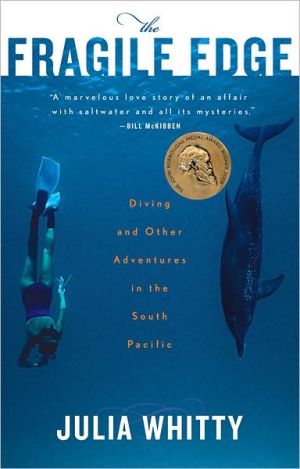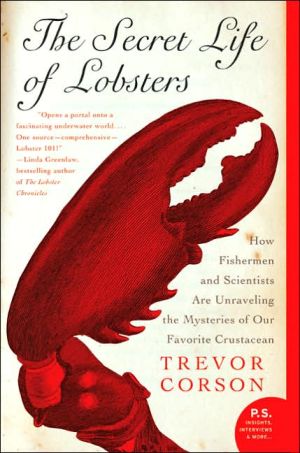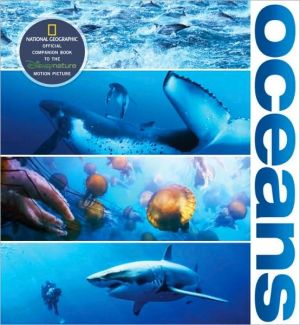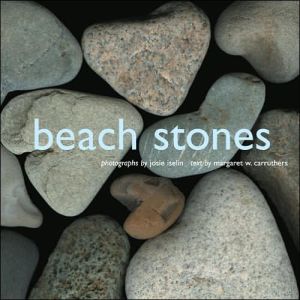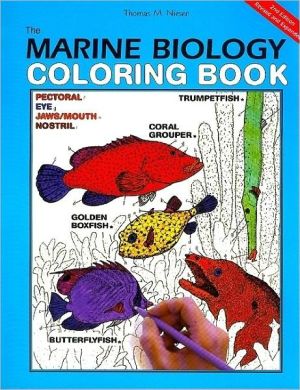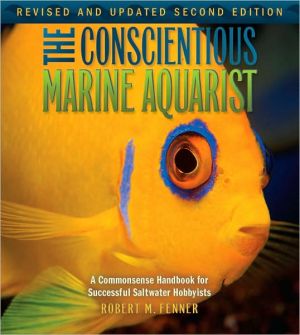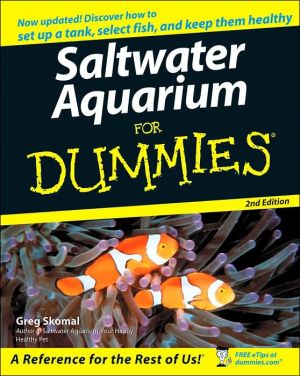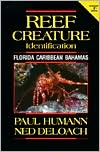The Fragile Edge: Diving and Other Adventures in the South Pacific
A master diver and filmmaker on the mystery, fragility—and heart-stopping adventure—of underwater life in the South Pacific\ Julia Whitty paints a mesmerizing, scientifically rich portrait of teeming coral reefs in the Tuamotu Archipelago, the Society Islands, and off the tiny nation of Tuvalu. The Fragile Edge takes us literally beneath the surface of the usual travel narrative—to the underwater equivalent of an African big-game safari, where hammerhead sharks rule a cascading chain of...
Search in google:
In The Fragile Edge, the documentary filmmaker and deep-sea diver Julia Whitty paints a mesmerizing, scientifically rich portrait of teeming coral reefs and sea life in the South Pacific. She takes us literally beneath the surface of the usual travel narrative, in an underwater equivalent of an African big-game safari. Hammerhead sharks rule a cascading chain of extraordinary creatures, from eagle rays to reef sharks, as the sound of courting humpback whales reverberates through the deep. Inspiring for both armchair and expert divers, The Fragile Edge reveals how science can extend our understanding of unfathomable waters, opening our eyes to the threats facing coral reefs and explaining why these fragile oases are vital to human survival. In this passionate, spiritual narrative of her adventures in the big blue, Julia Whitty emerges as one of our finest writers on the mystery, beauty, and fragility of the undersea world.Julia Whitty is the award-winning author of the short story collection A Tortoise for the Queen of Tonga. Her cover articles have appeared in Harper’s Magazine and Mother Jones, where she is an environmental correspondent and blogger for the Blue Marble. She has produced seventy documentaries for PBS, National Geographic, the Discovery Channel, and others. Whitty lives in northern California. The New York Times - Holly Morris The Fragile Edge is a quietly ambitious, if sometimes meandering, book. Are you up for tales of microscopic dinoflagellates? Interested in how the ancient Indian philosophy of Jainism may affect your interpretation of light playing off a lagoon? And don't be misled by the "hot girl swimming with a dolphin" cover photo or take the word "adventures" in the subtitle at face value. The book is as much scientific and spiritual meditation as it is eco-treatise or diving expedition.
1 Rapture\ All day we have been observing the surgeonfish, which the Tahitians call maroa and the French call chirurgien, streaming over the outer reef slopes in tightly knit single files. Now, in the final hour of daylight, scores of them coalesce into banners of yellow-and-blue fins, flowing gaudily over the contours of the coral toward the edge of Tiputa Pass. Bunched into agitated crowds of hundreds, they rise above the reefs, swarming and butting each other in a chaos of seeming cross purposes.\ Stimulated by the onset of a waning moon in the South Pacific, the surgeonfish cluster, rise, bump, then drop back to the reef, disperse, circle, regroup, and rise again. A dozen times they practice, each round taking them higher into the water column, farther from the safety of the coral. The foreplay culminates in what scientists call spawning and what the French divers I’m with charmingly refer to as lovemaking—a pair of surgeonfish detaching from the crowd and exploding upward in an impossibly fast arc, then ejecting their sperm and eggs into the open water in a burst of milky smoke. Never breaking stride, the pair shoots back to the reef at speeds nearly unrecordable by the human eye. Other pairs follow. And others. At the apex of each upward burst, the ejaculated white puff-balls hang still, yet riotously mobilized as the chemistry of conception begins, sperm seeking eggs with 3 only a moment for the microjourney to succeed before the gametes are caught in the outflow of water from the pass, torn apart, and carried out to deep water.\ When it’s too dark underwater to see anymore, we motor back to land against a sunset as soft and mutable as a watercolor. While we rinse our gear at the dock, my fellow divers have blissful expressions on their faces. It’s always this way. It doesn’t matter who they are, what their names are, or where the coral reef is; but in this case, as we return from Tiputa Pass at Rangiroa Atoll in French Polynesia, the faces are those of two young Frenchmen. Both guide here professionally, at this fragile edge between land and sea. If anyone would be jaded it would rightfully be them. But the opposite has happened. The rapturous state induced by the reef has caught these tough young men in its spell and rendered them, for this moment, as beatific as angels.\ It’s rare in the wild to see the moment of conception, and our mood is joyful, relieved, as if we’ve conquered some summit and survived. The French divers are happy this day delivered up such a pretty secret. Back in my fare (bungalow), I check my underwater slate, eager to transcribe its notes into my journal—only to laugh when I discover nothing more than a single exclamation point marked on it.\ Such is the paradox of the reef: a world that feels purely and extravagantly sensual yet exists mostly outside our own sensory realm. We smell nothing underwater (although the sea is filled with scents), taste only the metallic twang of compressed air, see poorly, and are reduced to nondirectional hearing; in effect, we’re disabled. Nor can we talk. Without language, without the correct words, or any words, human divers revert to a preverbal state of mind. So the dive you’ve just made tends to be felt rather than accurately remembered, and the little plastic slate you’ve dutifully carried underwater for note-taking reveals only doodles or strange hieroglyphs—made more difficult to decipher since the pencil marks, supposedly erasable by scrubbing with beach sand, never really do come clean, leaving you to contend with the ghostly outlines of all your previous, equally enigmatic dives.\ This is the struggle, or at least my struggle, working underwater: how to comprehend and then translate the otherworldly marvels under the surface into the alien world topside.\ On all of planet earth exist only three hundred thirty coral atolls (Malayam atolu: reef; from adal: closing, uniting), the necklace-shaped islands consisting of sandy islets surrounding a tropical lagoon. Rangiroa is one of the seventy-seven atolls comprising the Tuamotu Archipelago, itself one of the five archipelagos of French Polynesia. Taken together, all the islands of French Polynesia cover an area of the South Pacific larger than western Europe, and the Tuamotus inhabit a seascape larger than California.\ Millions of years ago, the Tuamotu Archipelago was the scene of rampant vulcanism fueled by a rising plume of magma known as a hot spot under the Pacific plate. Today these islands sit atop a wracked area of sea floor known as the Tuamotu Ridge, which marks the eastern edge of the volcano-scarred western Pacific. To the east, as far as the Americas, lies an entirely different bathymetry, a relativelly featureless underwater plain scored by a series of east-west running fracture zones. The Tuamotus lie between the Marquesas Fracture ZZZZZone to the north and the Easter Fracture Zone to the south—the names indicative of some of the Tuamotus’ nearest neighbors.\ This is an isolated place. The nearest continental land to Rangiroa Atoll lies four thousand miles due south at Marie Byrd Land in Antarctica, and the nearest inhabited land of any size lies forty-four hundred miles due west at the Cape York Peninsula on Australia’s northernmost tip. To find anything substantial in the opposite direction, you have to travel five thousand miles east to Peru. There is hardly a place on the globe farther from continental landmasses, and as a result both the underwater and the topside worlds are dominated by the Pacific Ocean.\ The superlatives surrounding this far from peaceful body of water are daunting. At sixty-four million square miles, it’s larger than the total land area of the world combined, covers a full one-third of our planet, and contains more than half the world’s seawater. It is home to thirty thousand islands and five climate regions—the westerlies, the trades, the monsoon region, the typhoon region, and the doldrums. Its basin is deeper than that of any other ocean, maintaining an average draft of fourteen thousand feet, and in places plunging abysmally to a world-record-setting thirty-six thousand feet, about seven miles. The Pacific encompasses the epicenter of coral evolution today, and is home to 40 percent of all the world’s reefs, including our planet’s most extensive barrier reef and atoll formations. On this unfathomably productive and dangerous seascape, tiny Rangiroa floats like a fallen flower petal—seemingly too small to survive or to be survived upon.\ Yet this is the second largest atoll on earth, stretching roughly fifty miles from east to west and twenty miles from north to south. It encloses a nearly four-hundred-square-mile lagoon within a one-hundred-forty-mile bracelet of islets—four hundred eighteen islets in all. Called motu by the Tahitians, these islets are almost as insignificant as midoceanic shoals, since they rise only fifteen feet above sea level, are virtually devoid of freshwater, and possess only sand for soil. Yet they have been tenaciously colonized by Polynesian people throughout the South Pacific. In fact, the sandy motu of atoll islands have always welcomed open-ocean sailors, including the drift-seeds and drift-fruits that bob on the waves: the coconut, the mangroves, and their unwitting passengers of insects, crabs, and seabirds.\ To stare out at Rangiroa’s lagoon is akin to looking over an infinite ocean, with the motu on the far side lost beneath the curvature of the earth. In fact, the only clue you have that it is not the ocean is its relative calm. Three hundred feet away on the open-ocean side of the motu, the surf thunders day and night without pause, whereas most days the lagoon side is as calm as a millpond, its tranquil waters painted in so many vibrant shades of blue and green and turquoise and beryl that you conclude the ancient Tahitians had it right, that God is not in the clouds but in the lagoon.\ Because of its geography, Rangiroa has a tremendously dynamic reef system. Its four hundred eighteen motu are separated by tidal channels called hoa—most of which are too shallow for anything but the smallest boats to travel through, and some are too small for that. Yet Rangiroa also possesses the crown jewel of atolls—two navigable hoa, five hundred yards wide, known as Tiputa Pass and Avatoru Pass.\ Partly because of these passes, the changing of the tides at Rangiroa Atoll produces an extraordinary phenomenon of pressures and counterpressures as seawater either presses into the lagoon or rapidly escapes from it. At these times, Tiputa Pass in particular is transformed into a maelstrom of inflow and outflow, water colliding and spinning off whirlpools that appear underwater as snaky tornadoes of blinding sediment. The French call this the mascaret, translated as a high wave that travels backward up large rivers during flood tides. In Rangiroa, the word refers to conditions that occur when the tide is flowing out of the lagoon into the open sea and the wind is blowing against it, or vice versa. This happens once or twice a day when the battle between wind-driven currents and water-driven currents result in waves climbing each other’s faces and battling to a standstill—in other words, becoming standing waves, which in Tiputa Pass can reach fifteen feet.\ No human diver can survive immersion into the full brunt of the mascaret. So those of us who come to Rangiroa dive its edges, where the noise of the rip tide rumbles beneath the brighter soundtrack of the sea, the snapping, clicking, rasping, buzzing, squealing, and grunting of fish, shrimp, clams, and corals at work. For these creatures, the waxing and waning of the mascaret is an external force akin to a combined circulatory and respiratory system—an enormous set of oceanic lungs inhaling and exhaling four times a day, pausing briefly in the slacktide. In this way the sea is enriched: huge loads of organic matter emptying out of the lagoon to nourish the outer reef slopes, immeasurable quantities of clear water from the open sea rushing back to refresh it.\ As with many of my dives in the course of shooting four nature documentaries here, Yann Hubert is guiding the way. I’m familiar with his yogilike presence underwater. Simply put, he’s the best diver I’ve ever seen—a total contrast to his dry-world persona, which tends to fidgety boredom, chain-smoking, and amusing himself with incomprehensibly profane and colloquial French jokes. But down here he’s a master, breathing so rarely, so delicately, that fish sidle up to him as if he were not, like the rest of us, an intruder from another world. I believe I understand his secret: total compliance with the environment. Rather than challenge the currents he remains still, using the minimum angulation of body or fins to move. But even knowing this, I’m stunned to see—after surreptitiously checking his gauges at the end of several dives—that he doesn’t consume enough air to sustain human life.\ This morning, we descend through a crowd of yellowspot emperors resting in the shade cast by our inflatable Zodiac boat, then beyond them, through a phalanx of batfish, steely and triangular as arrowheads. Yann drifts to my left, falling lightly through the center of a silvery cyclone of thousands of blackfin barracuda riding one another’s tails in a vortex of their own making. They open up to let him through, then close ranks behind him.\ Far below the coral appears, mottling the sandy bottom in deepening shades of blue. Large animals drift over it; a manta ray sailing the edge of the current, ghostly schools of gray reef sharks, hundreds packed shoulder to shoulder, shoaling like lowly sardines. This is their chief defense against even larger predators, and proof that there is no absolute invincibility in the sea. A few rise to greet us, their blunt bodies cruising through schools of bluelined snappers.\ This is the season when great hammerhead sharks (Sphyrna mokarran), which the French call grand requin marteau and the Tahitians call mao tuamata, cruise Tiputa Pass, snacking on reef sharks exhausted after bloody mating rituals. Although the two cameramen I’m with are busy at the moment filming the cyclone of barracuda and a large, friendly napoléon wrasse, we are all hoping that one of the ten- or twelve-foot (or more) hammerheads will sidewind its way over the bottom and frighten the reef sharks into acting like a school of oversized minnows.\ Yet there are many other creatures of interest, including a small squadron of spotted eagle rays sailing the wall of coral below. These are among the most graceful animals in the sea, adorned with Art Deco designs of white circles and polka dots on velvety black backgrounds. They appear to be all wings and soar as hydrodynamically as underwater kites. This group is in nuptial flight, with seven males in pursuit of a female.\ I wave at the cameramen, one below me, one above. But they are focused on their own tasks and blinded by their dive masks. I shout, and a profusion of bubbles rises from the regulator in my mouth, drawing a curtain over the scene. Though my voice is deafening in my own head, it cannot travel the short distance to either cameraman through the dense medium of the water. Frustrated, I swim through my bubbles to the downhill cameraman, grab him, and point. He flinches from the contact, as we all do when touched underwater, then follows my finger. Less than a minute has elapsed since I saw the spotted eagle rays, yet already they have faded to faint shadows silkscreened on the distant ocean. He looks in my eyes and shrugs. The rays are barely twitching their wingtips, yet we could never, in our wildest dreams, hope to catch them.\ This is only one of what amounts to thousands of missed opportunities underwater—opportunities missed so regularly and predictably that filming or working here becomes a Zen exercise in detachment. If we were to want the eagle rays too much, or to find ourselves filled with regret at having missed them, then our experiences underwater would quickly become bitter ones. Just to test our knowledge of this, we also, on this dive, miss filming a triggerfish building a nest, a traveling circus of bumphead parrotfish, and, on the smallest scale, a starfish shrimp from the genus Periclimenes living nearly perfectly camouflaged atop its host sea star.\ Copyright © 2007 by Julia Whitty. Reprinted by permission of Houghton Mifflin Company.
ContentsPart I: Rangiroa 1. Rapture 3 2. Swimming in the Bellybutton 11 3. The Manysided Lagoon 16 4. Changeover 22 5. Breath Control 28 6. Inside the Turtle’s Shell 36 7. The Near-Field/Far-Field Boundary 44 8. Eavesdropping 52 9. Big Songs 58 10. The King of Lake Vaihiria 65 11. Impermanence 74 12. The Infinity Pool 81 13. Inshallah 89 14. Poi Dogs 94 15. The Consorting Together of Dissimilar Organisms 103 16. It Furthers One to Cross the Great Water 108 17. The Lemon Shark Affair 114 18. Grand Secret 121Part II. Funafuti 19. Hideaway 133 20. Falling Dominoes 140 21. Liquid Faultline 147 22. Leave Your Values at the Front Desk 153 23. Little Cemeteries 158 24. Diving the Apocalypse 166 25. Nuptials 173 26. Just Do It 181 27. Beseeching the Wind Horses 187 28. Sinking Dragons 193Part III. Mo‘orea 29. The Churning of the Ocean 201 30. An Ocean of Silence and Bliss 208 31. The Sleep of Plants 214 32. Living Lanterns 219 33. The Clamor of True Democracy 224 34. The Spirit of Godly Gamesomeness 231 35. Coral Noose 238 36. Mother Ocean 246 37. Fish Tamer 254 38. A Force Like a Hundred Thousand Wedges 259 39. Gleanings 267 40. Across the Threshold 272Epilogue 277 Notes 282 Glossary 287
\ Holly MorrisThe Fragile Edge is a quietly ambitious, if sometimes meandering, book. Are you up for tales of microscopic dinoflagellates? Interested in how the ancient Indian philosophy of Jainism may affect your interpretation of light playing off a lagoon? And don’t be misled by the “hot girl swimming with a dolphin” cover photo or take the word “adventures” in the subtitle at face value. The book is as much scientific and spiritual meditation as it is eco-treatise or diving expedition.\ — The New York Times\ \ \ \ \ Library JournalFor those of us who can't visit the South Pacific, television documentary writer and producer Whitty gives us the next best thing. Her way with language—at times reminiscent of Lynne Cox's poetical Grayson—makes readers feel they are actually part of the coral reef atoll environment, both above and below the surface. This is at once a memoir of her travels and an easy-to-grasp introduction to the ecology of coral reefs and the Polynesian peoples. Whitty neither shies away from supplying the scientific names of the plants and animals or the origins of various scientific terms, nor does she hesitate to bring in Eastern philosophy and Japanese poetry when warranted. There's even a glossary. The lack of a bibliography for further reading is unfortunate, but one hopes the enchanted reader will consult a librarian for advice on where to go next. Recommended for all types of libraries, except elementary school institutions.\ —Margaret Rioux\ \ \
